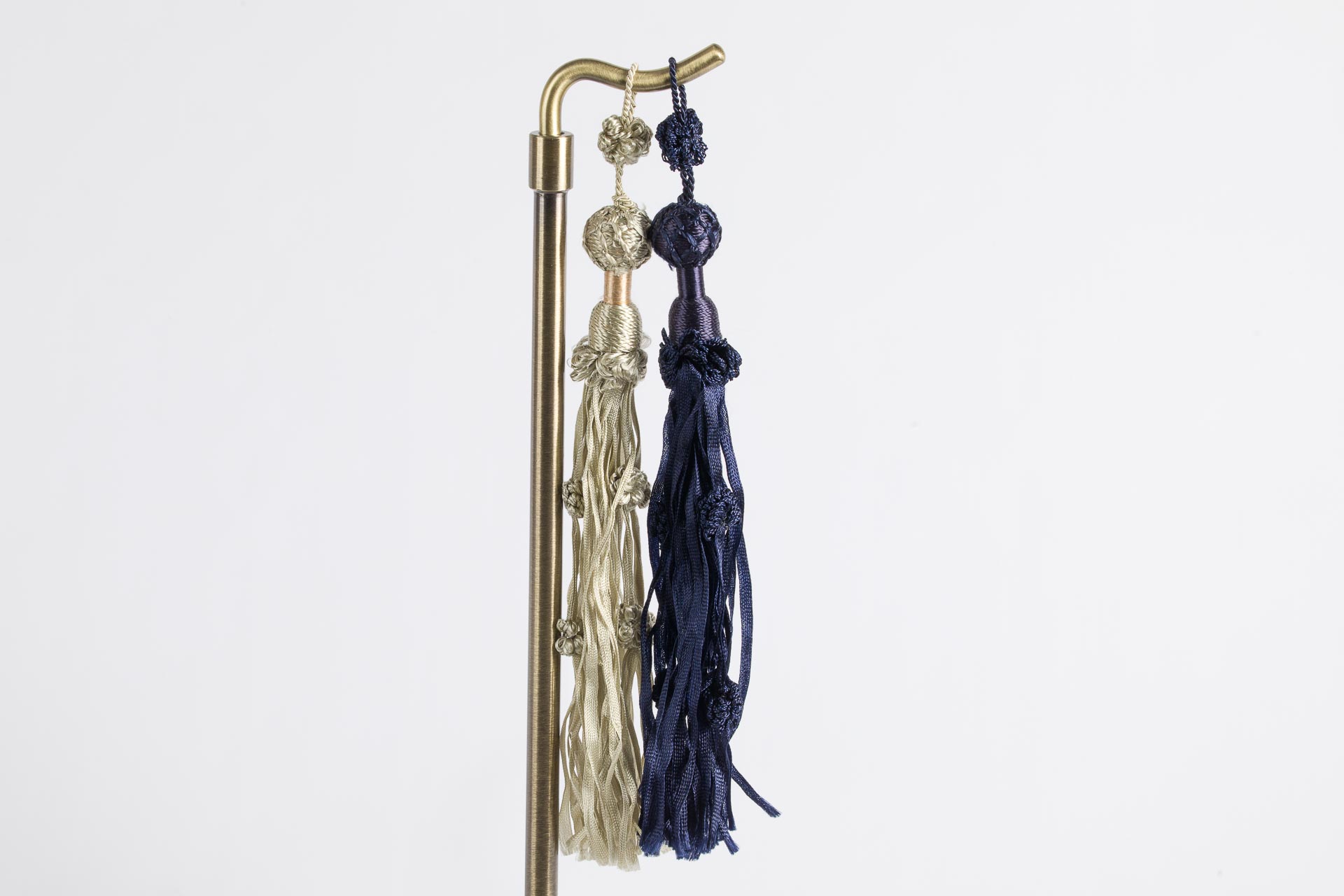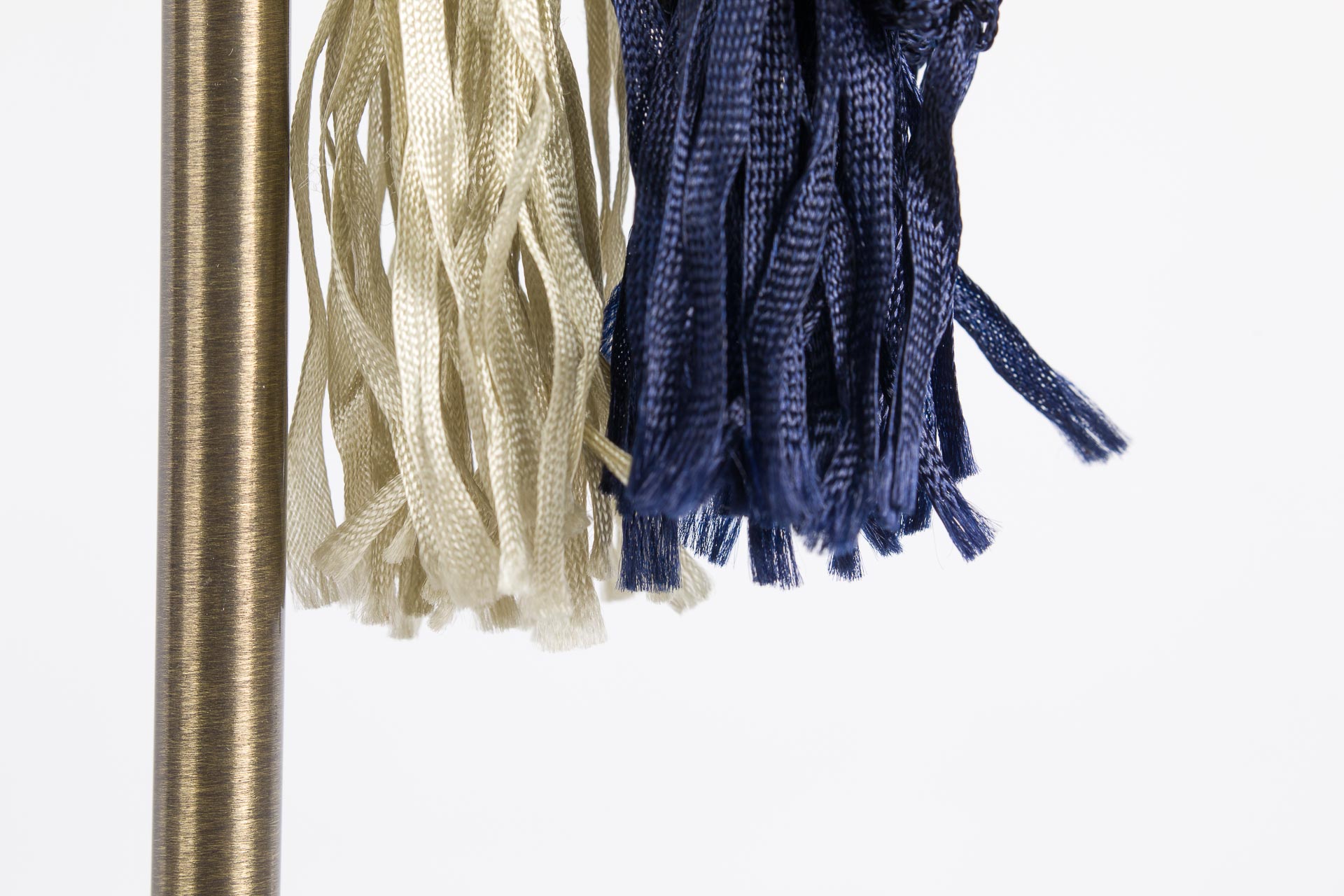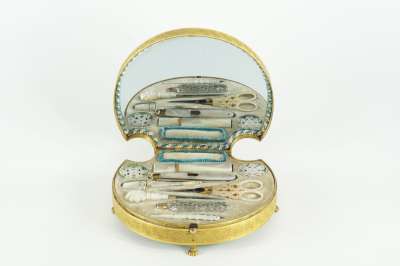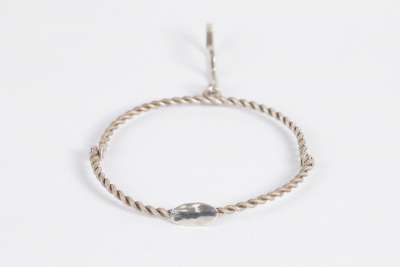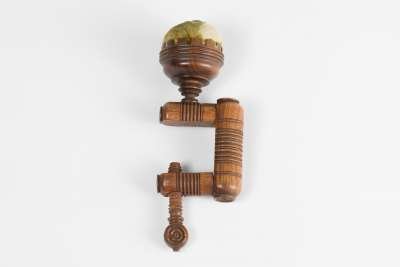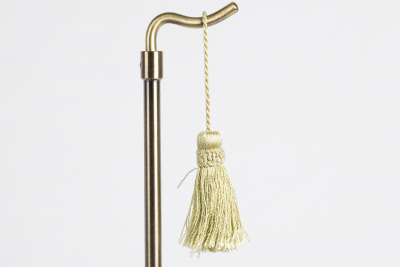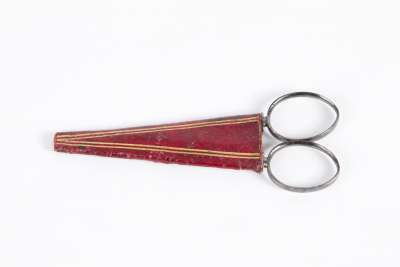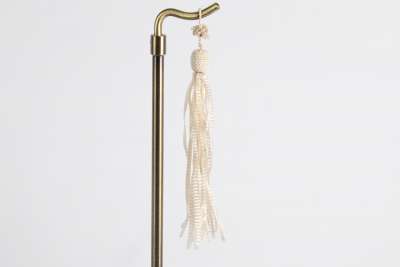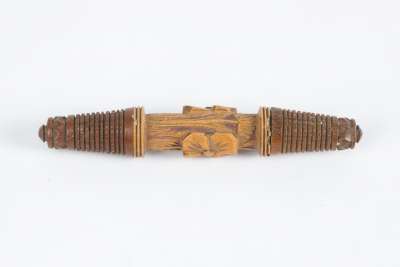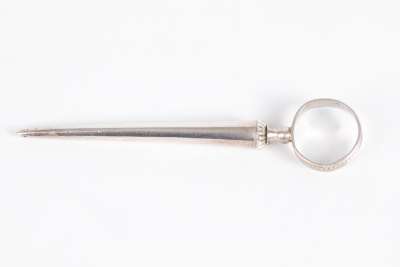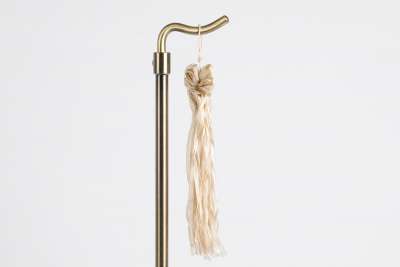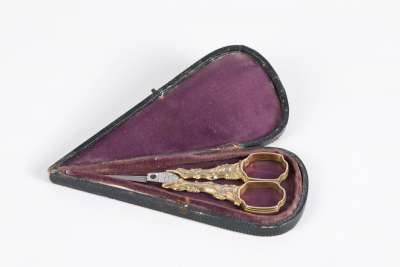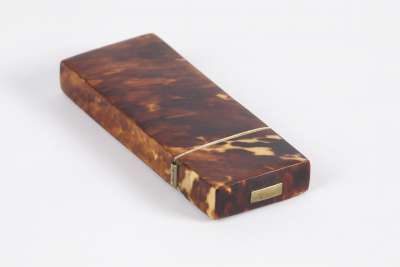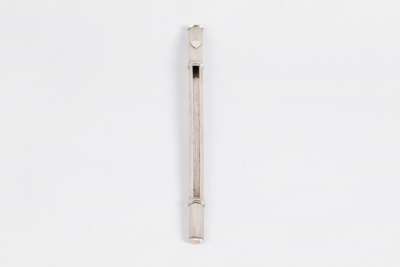These Edwardian tassels, dating from circa 1901-1910, are a fine representation of early 20th-century textile craftsmanship. The tassels feature a harmonious blend of blue and silver tones, typical of the period's decorative arts. The intricate design showcases the elegance and attention to detail prevalent in Edwardian times. Originating from the United Kingdom, these tassels are reflective of the era's penchant for opulence and decorative flair. The use of high-quality materials and meticulous craftsmanship is evident in the detailed weaving and the subtle interplay of colours.
Condition Report
These Edwardian tassels are in a condition consistent with their age and historical use. Over the years, the tassels have developed a patina that adds to their historical charm. The blue and silver threads remain vibrant, although there are minor signs of wear, particularly at the edges, which is typical for textile items of this vintage. The tassels have been well-preserved, with no significant damage that detracts from their overall appearance. The condition is stable, ensuring that these tassels can be both displayed and handled with care.
Dimensions
Weight: 28gm, Length: 28cm, Width: 2.5cm.
A Decorative Element for Elegant Interiors
Originally, tassels such as these would have been used as decorative elements in interior design. They could adorn curtains, upholstery, or furniture, adding a touch of elegance and sophistication. The tassels' blue and silver hues would have complemented the rich colour palettes of Edwardian interiors, enhancing the overall aesthetics of a room. Their versatility allows them to be repurposed in modern interiors, adding historical charm to contemporary spaces.
Edwardian Style: An Era of Elegance
The Edwardian period is characterised by its emphasis on grace and refinement, and these tassels are a testament to that style. The choice of blue and silver reflects the popular colour schemes of the time, which favoured soft, muted tones combined with metallic accents. The intricate design of the tassels showcases the period's focus on detailed craftsmanship and luxury. This era was marked by a transition from the more rigid Victorian style to a lighter, more fluid aesthetic, which is evident in the design of these tassels.
The Craft of Tassel Making
The creation of tassels during the Edwardian era involved skilled craftsmanship, with artisans meticulously weaving threads to create intricate designs. The blue and silver threads would have been carefully selected for their quality and colourfastness, ensuring that the tassels maintained their vibrant appearance over time. The process involved techniques such as braiding and knotting, which required precision and expertise. The resulting product is a durable and visually appealing decorative item, showcasing the artisan's attention to detail and dedication to their craft.
Unattributed Artisanry
While the specific maker of these tassels is not documented, they reflect the high standard of workmanship typical of the era. Many artisans in the early 20th century worked anonymously, contributing to a rich tradition of decorative arts. The quality of these tassels suggests they were created by a skilled craftsperson, well-versed in the techniques and styles of the time. Such pieces were often produced in workshops specialising in textile decor, which supplied the growing demand for luxury home accessories during the Edwardian period.
Collected by Enthusiasts of Textile Art
Antique tassels like these are highly sought after by collectors of textile art, appreciated for their historical significance and aesthetic appeal. The Edwardian era represents a unique period in design history, with a focus on elegance and refinement that continues to attract collectors. These tassels, with their distinctive colour and craftsmanship, offer insight into the decorative trends of the early 20th century. Collectors value them not only for their beauty but also for their ability to convey the artistry and cultural context of their time.
